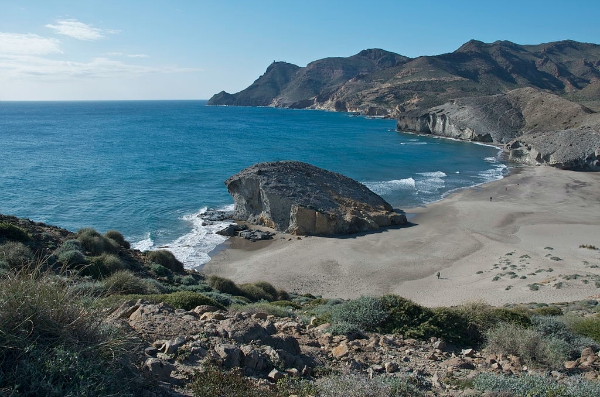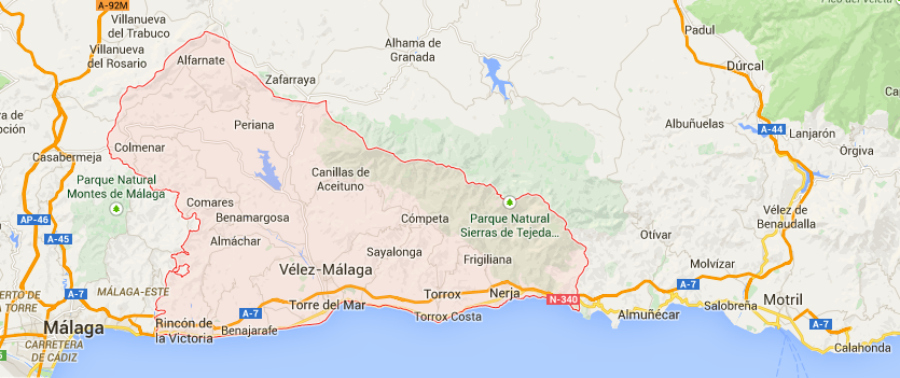There are many and varied regions to visit for day trips, some closer to Rural Paradise and others further afield requiring early starts and late returns. If returning late you don't have to worry about preparing a meal as Audrey and Les are very happy to have a tasty dinner ready on your return.
Rick Steves' and Expoza Travel's videos of Andalucía provide an excellent overview of this wonderful, colourful and vibrant part of Spain. It is a land of passion and a melting pot of both Europe and Africa. The videos are long but if you have the time and want to know more about Andalucía we thoroughly recommend them. We have incorporated the videos in this page for your convenience.
These are regions that can be visited as a relatively easy day trip from Órgiva:
- Las Alpujarras
- Axarquía
- Costa Tropical
- Southern Jaén
Further afield but still accessible during a day trip from Órgiva are:
- Las Subbéticas
- Almería
We cannot do justice to these regions on this single page so instead we summarised each region below and provided links to individual pages describing each region in more detail.

Playa de Mónsul, Cabo de Gata in Almería province
Las Alpujarras
The Alpujarras clings to the southern flanks of the Sierra Nevada, cloven by deep, sheltered valleys and gorges which run down towards the Mediterranean. Its terraced farmlands are constantly watered by the melting snow from above, constituting a high-altitude oasis of greenery which stands in dramatic contrast to the arid foothills below.
The cultural interest of the region lies in its fifty or so villages, which were the last stronghold of the Spanish Muslims, or Moors. These unique hamlets have retained their traditional Berber architecture - terraced clusters of grey-white box-shaped houses with flat clay roofs - which is still common in the Rif and Atlas mountains of Morocco. Perhaps the most picturesque villages are the famous trio which cling to the slopes of the Poqueira Valley. Pampaneira, at the bottom, Bubión, half way up the slope and Capileira at the top of the valley - the name is an Arabic derivation of the Latin word for head or top - and walk down from the road into the lower streets of the village, where the rocky streets, overhanging passageways and sagging, stone houses have still not been remodelled and prettified for contemporary living.
The village of Trevélez is famous throughout Spain for its superb mountain hams, or jamón serrano. It is, at over 4,840 feet above sea level, the highest village in Europe, overhanging a fast-flowing river and plunging mountain valley. More information ...
The people of the Alpujarra have a saying “We have our head in the clouds but our feet in the sea”.


Axarquía
The Axarquía (pronounced axarˈki.a) retains all the charm of yesteryear thanks to unspoilt havens and attractive coves and beaches where bathers can flee the crowds to be found to the west of Malaga. It is a land of contrast where high mountains look down upon the beautiful beaches of the Costa del Sol. The highest of the mountains, in the northeast of the area, is La Maroma which reaches an altitude of 2,080 metres and is snow-capped in the winter in contrast to sunbathers on the beaches below. There are many undeveloped villages and towns in the inland regions and some remain on the coast. Mules are still used as a means of transport and bullocks can be seen ploughing the fields. It is a land of gaiety, colour, fiestas and natural produce from the sea and land. More information ...
Costa Tropical
The Costa Tropical is the coastline of Granada province, so named due to the micro climate that creates a sub tropical environment.
Along much of the Costa Tropical, mountains run right down to the beach forming a series of stunning headlands and protected coves and beaches, the horseshoe shaped bay at La Herradura is a lovely unspoilt example. This coastline is very popular among climbers and hikers alike, and those visiting to enjoy the many sports this coast is famous for. In coves east of Punta de la Mona, scuba diving is popular, thanks to the variety of sea life and clarity of the water.
The white village of Salobreña is worth a visit. Here you will be torn between visiting the moorish castle and the beach. The successful survival of sugar cane plantations here confirms the name Costa Tropical. Almuñécar is one of the largest towns on the Costa Tropical and not surprisingly is host to a number of excellent attractions, well worth a visit, like the San Miguel Castle, for example. More information ...


La Subbética
The Sierras Subbéticas natural park has been classified by UNESCO as a Geopark. It is a protected space with great ecological and scenic wealth and has a surface area of 31 568 Ha covering the towns Cabra, Priego de Córdoba, Carcabuey, Doña Mencía, Iznájar, Luque, Rute and Zuheros.
This mountainous area's most characteristic feature is its beautiful limestone Karst landscape. The land, made up of sharp slopes and hills, rises above breathtaking, narrow valleys. The typically Mediterranean vegetation is rich in holm and gall oak, as well as maple trees and hackberries. The most outstanding landscapes are found in the Sierra de Cabra. Its highest peak is El Picacho (1217 m) and is known as the "Balcón de Andalusia" (Andalusia's balcony). The peaks la Tiñosa (1570 m) and Bermejo (1476 m) that form part of the Sierra de Horconera close to Priego de Córdoba, provide a wonderful setting.
There are many hiking and mountain trails in the Sierras Subbéticas natural park, such as the Vía Verde de la Subbética. It can be carried out on foot, by bike or on horseback and is the perfect way to take in this ecological space's unique beauty and learn about its wide variety of flora and fauna. There are also many opportunities to spot griffon vultures, golden eagles and Bonelli's eagles, as well as the peregrine falcons and Egyptian vultures. More information ...
Almería
